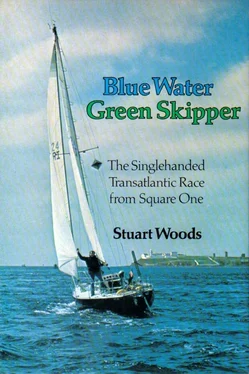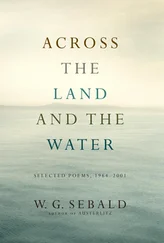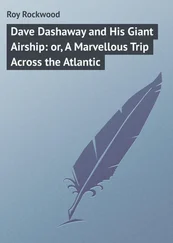It was now clear and very cold (it was only April, remember) with a huge full moon lighting everything through the haze. As I took the helm, Richard gave me the course and said he hadn’t sighted the Lizard light and thought we had probably passed it in the fog, earlier. I settled down in my long underwear, jeans, two sweaters, offshore jacket, lined mittens, and my balaclava. The balaclava was the best idea I’d ever had, I thought, keeping me nice and warm inside my jacket’s hood.
Half an hour later I sighted two flashing lights slightly off the starboard bow. This was very peculiar, according to the ship’s light patterns I had studied in the yachtmaster’s course. A larger ship will have two mast lights, one high, aft, and one lower, forward. But they do not flash. The only thing that flashes is a lighthouse or a buoy, and besides, I couldn’t see the red and green port and starboard lights which a ship should be wearing. I switched on my pocket torch (always necessary on a night watch, I had discovered) and had a look at the chart. We were past the Lizard, we thought, and the lights were too high to be buoys. I turned to port to avoid the thing, which seemed to be moving.
The two lights continued to flash, and the whole thing made no sense, so I decided to call the skipper. I didn’t feel too bad about waking him up, anyway. I shouted “Ian!” half a dozen times, but got no reply. Finally, I lashed the helm, stuck my head down the companionway, and yelled, “SKIPPER!” This message did not reach Ian, but Richard stumbled, shivering, out of his sleeping bag. We regarded the flashing lights together, through the haze. Finally, Richard dug out Reed’s Nautical Almanac, consulted it briefly, and timed the lights.
“Well,” he said, finally, “ one of ’em is the Lizard,” and went back to bed. I corrected my course quickly, having been steering toward a large and very solid part of Cornwall for the past five minutes. Sure enough, as we drew abeam of the thing, the lighthouse became visible. The second flashing light appeared to be caused by the light striking another, smaller tower of some sort behind the lighthouse. Later, what seemed to be Falmouth appeared and receded.
That afternoon came the highlight of this exciting voyage on the world’s fastest one-tonner. We put into Salcombe for more fuel. We had no dinghy and only one jerry can and the petrol stations were all closed, but the kindly harbormaster quickly arranged for us to buy ten gallons from the local ferry operator, and we were on our way again faster than if we had had a dinghy and more than one jerry can and if the stations had been open. Moreover, after crossing the bar at the mouth of the harbor, we found that rare thing, a breeze, and got a couple of hours of sailing in before it died and we had to go back to the engine.
I was on at midnight, then again at nine on Monday morning (the skipper was saving himself again). It was quite foggy, and we were approaching the Needles, the group of rocks at the western end of the Isle of Wight. Ian fiddled with the Radio Direction Finder, did some calculating, and said, “You’ll be hearing the Needles fog signal soon.” Soon, indeed, the mournful sound came out of the fog, and shortly afterward, the proper buoy appeared on the nose. I was impressed.
We were in the Lymington Yacht Marina by eleven, cleaned out the boat, cleared customs, rang Avis for a car, and by one I was in bed at the Angel Hotel, dead asleep. It had been the most boring and most exhausting three days I have ever spent on a boat, before or since. So much for exciting delivery trips in fast sailing boats.
The following evening I met for the first time, in person, both Ewan Southby-Tailyour and Shirley Clifford. Ewan (it is pronounced Uwan, I discovered, and Southby, as South) looked more distinguished than his years would suggest, and Shirley looked just like her photograph. Everybody was a bit restrained when we first met at my hotel, two-thirds of the group being British, but after our arrival at a Poole restaurant and the subsequent wine consumed, relaxation prevailed, and I may even have been forward with the lovely proprietress. The evening ended, I think, with an aura of goodwill, in the officer’s mess of the Poole Royal Marine base at three a.m. Shirley reassured me that it would be okay with her husband for her to sail with two strange men to a remote island in the North Atlantic. She was a victim, she said, of the “marry your crew and give her hell” syndrome and could not occupy the same floating object as her husband.
Next day, I visited some chandleries and called in at M. S. Gibb in Warsash and Kemp’s in Titchfield. Gibb makes the Hasler Windvane self-steering system, and I met Robert Hughes, their marketing manager and resident self-steering expert, who kindly showed me where and how the things were built. I left almost understanding how the gear worked.
At Kemp’s I went over the mast order, and Peter Cartwright and his people made a suggestion or two which seemed useful. Earlier in the day, James Kirkman, sales manager at Brookes & Gatehouse, had spent some time explaining the workings of the instruments I had bought, so my time on the south coast was well spent.
I dashed up to London and spent a day or two taking Ann to the theater and gaining weight, then flew back to Cork, anxious to see my newly molded hull and deck.
It hadn’t been molded. Somebody’s brother had died, or something, and they promised to have it done and out of the mold on the following Monday, a week later. I was extremely annoyed at the delay, especially since Bill King was coming down for a visit, hoping to see the boat under construction, but I gave the yard my next installment on the boat, £5,500. It was the largest check I had ever written. As long as I was writing big checks I thought I might as well give John McWilliam some money, and as something extra he threw in a free ride on Irish Mist II, which had just been launched.
I leapt at the chance, and soon was crouched on the tiny afterdeck behind the helmsman, getting my first look at what goes on on a big boat. Quite a lot went on, and it would not be long before I got considerably more experience on the big two-tonner.
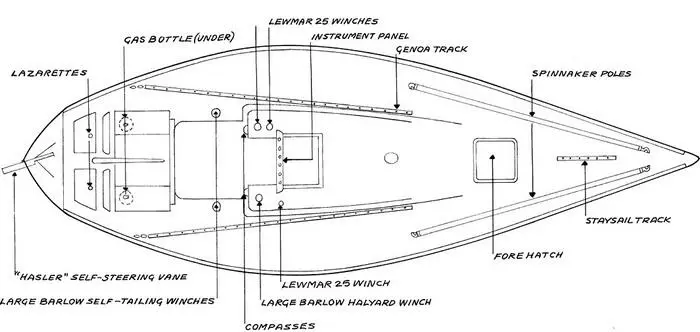
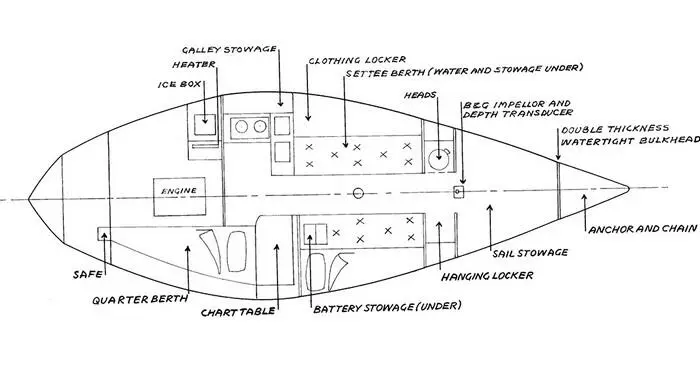
Bill King arrived on schedule, chugging up to the cottage in a tiny Fiat, and we grilled steaks in the backyard, American style, while we talked about boats — his and mine. Bill is a firm believer in Blondie Hasler’s Chinese Junk rig, which does have its advantages. It can be reefed in seconds without the skipper’s bothering to come on deck, and it is quite possible to cross an ocean in such a boat without so much as donning oilskins.
The following day we went to the yard and Bill saw everything, from the molding to the joinery. He pronounced himself impressed with the design and spent a long time talking with the various foremen and with George Bush and Barry Burke. We had a good day, and I came away feeling that his trip had been worthwhile, even if we couldn’t see my boat. The following day, we went over my charts and made a list of what else was needed for the Azores race. It was startling, the number of charts and publications necessary for such a passage. I had only about half of what was needed.
A local diver came and had a look at my mooring that day, too, replacing some chain and a couple of shackles which had rusted beyond safe limits. I would be ready for the boat long before she would be ready for me.
I spent the weekend in Galway, where Galway Bay Sailing Club was holding its annual boat show. I had worked on the one the year before, and was interested to see how the new edition looked, and surprised to find my old Mirror, Fred, on display and for sale. The local doctor to whom I had sold her in the fall had never even sailed her.
Читать дальше
